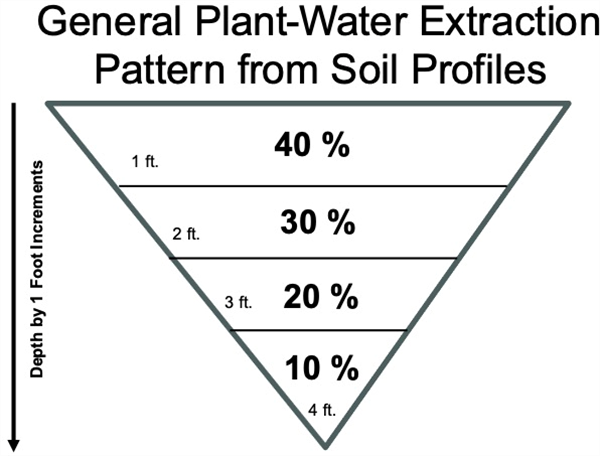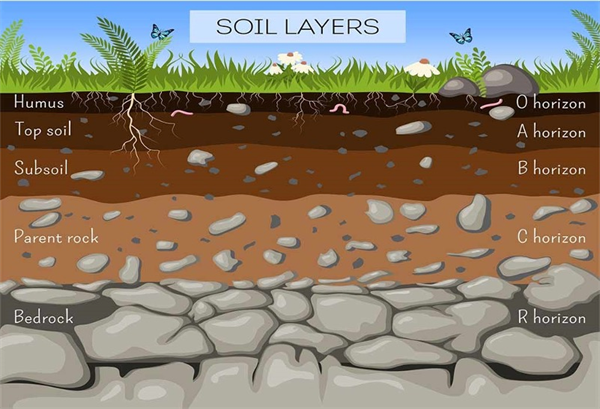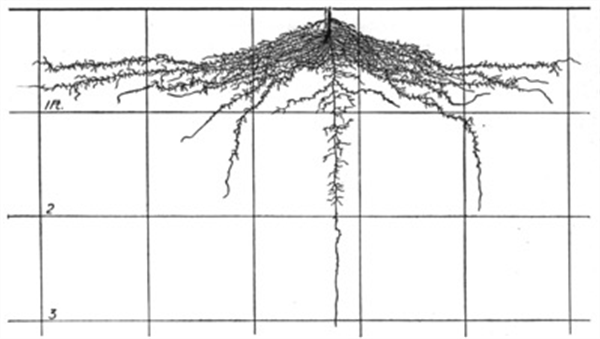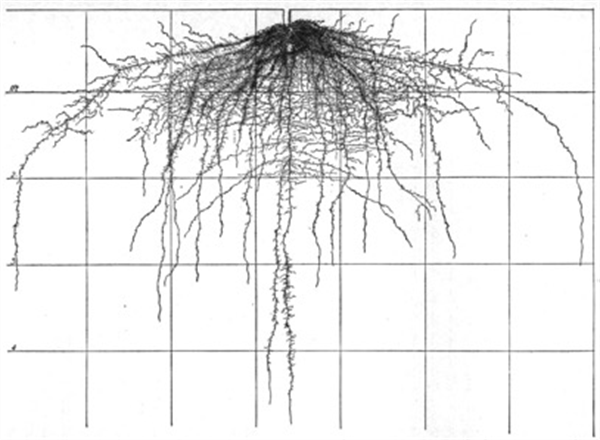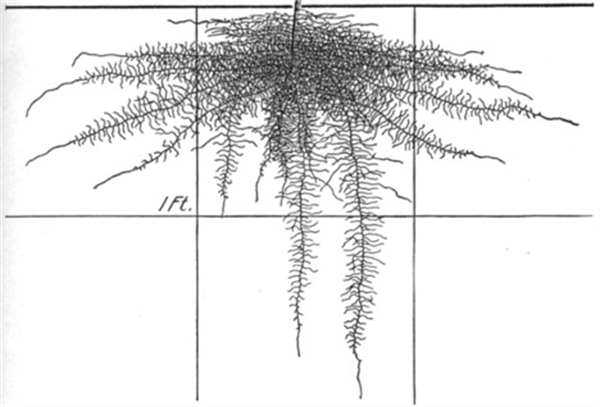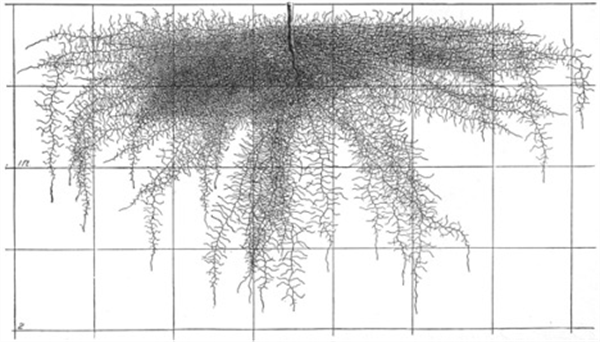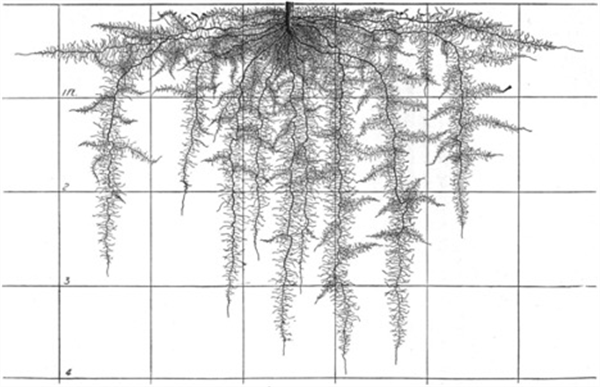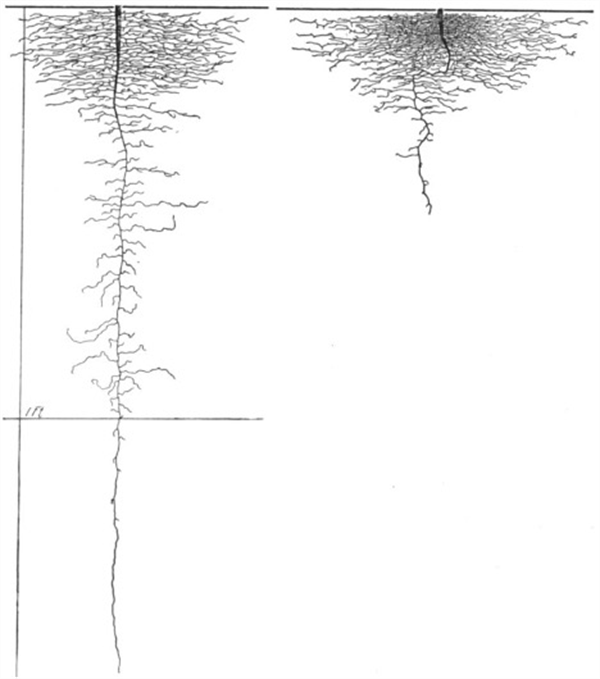-
Aug 19, 2020Diamondback Moth on Fall Cole Crops
Even though it’s been four years since the devastating diamondback moth (DBM) outbreak, apprehension remains that DBM could appear in large numbers this fall. In the desert, DBM is generally considered a minor pest that occasionally builds up to damaging levels in the late winter and spring. In fall produce crops, survey data has shown that DBMs can easily be controlled control with 1-2 well timed insecticide sprays. But in the fall 2016, outbreaks of DBM population occurred throughout all vegetable growing regions in Arizona where it was determined that the source of the DBM originated from infested transplants. We later discovered that the invasive DBM population was highly resistant to chlorantraniliprole (Coragen, Beseige, Belt and Vetica). Infestations experienced by Arizona growers that season were not anticipated, and overall, the resistant DBM caused serious economic losses in Cole crops. However, the population abundance of DBM in the desert the last three seasons has been significantly lower than what was observed in 2016. We have received no complaints from PCAs or growers of uncontrollable DBM infestations, crop damage or yield losses since 2016, and PCAs reported having no difficulty controlling larvae or adults with commonly used insecticides, including the chlorantraniliprole. In 2019, fall field inspections of transplants also yielded no larvae on plants arriving from local and coastal nurseries. Thus, we have concluded that the DBM populations that appeared in in the desert in 2017, 2018 and 2019 were a distinctly different population than those that infested crops in the fall of 2016. It is highly likely that the DBM populations showing up in the desert the past 3 seasons migrated concurrently onto both direct-seeded and transplanted cole crops in wind currents following September storms. Field trials conducted at the Yuma Ag Center last year confirmed the local DBM populations were susceptible to the key insecticides (Radiant, Proclaim, pyrethroids, Verimark/Exirel, Coragen/Beseige) used for their management. In addition, laboratory bioassays of field collected DBM from YAC last fall and spring showed no indication of resistance to chlorantraniliprole.
In an attempt to document the impact of the DBM outbreaks on Arizona Cole crops the past four seasons, we conducted a two-part survey of growers and PCAs from Yuma, Maricopa and Imperial Counties in April 2019 to (1) estimate the severity of yield losses from DBM on direct-seeded and transplanted Cole crops, and (2) the intensity of chemical management required to control DBM, and associated level of control provided by each insecticide product used. To download a copy of the survey results and recent research click on the following link: Survey of Diamondback Moth on Desert Cole Crops, 2016-2020
Note: DBM are like a box of chocolates: “You never know what you’re going to get”. Do not become complacent. Because DBM populations disappear from the desert each summer and reappear on fall crops from outside sources (see graph below), we never really know how abundant fall populations will be, or how susceptible to insecticides they will be. So be vigilant in scouting and follow IPM guidelines for DBM management. To download a copy of the 2020 DBM Management Guidelines, click on the following link: 2020 Guidelines for Diamondback Moth Management in Desert Cole Crops
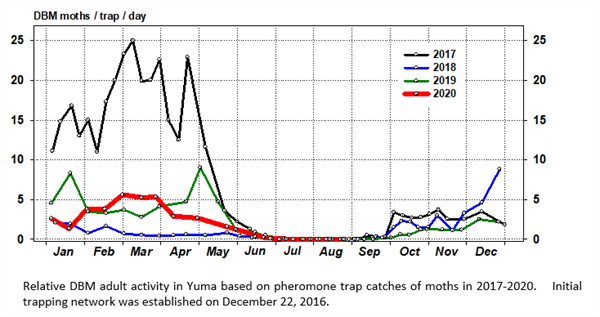
Name that Pest – Aug 19, 2020
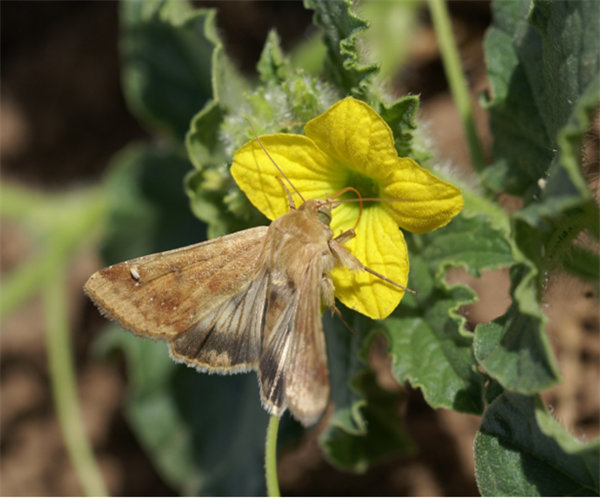
Please provide the common and scientific name for this insect.
To contact John Palumbo go to: jpalumbo@ag.Arizona.edu



